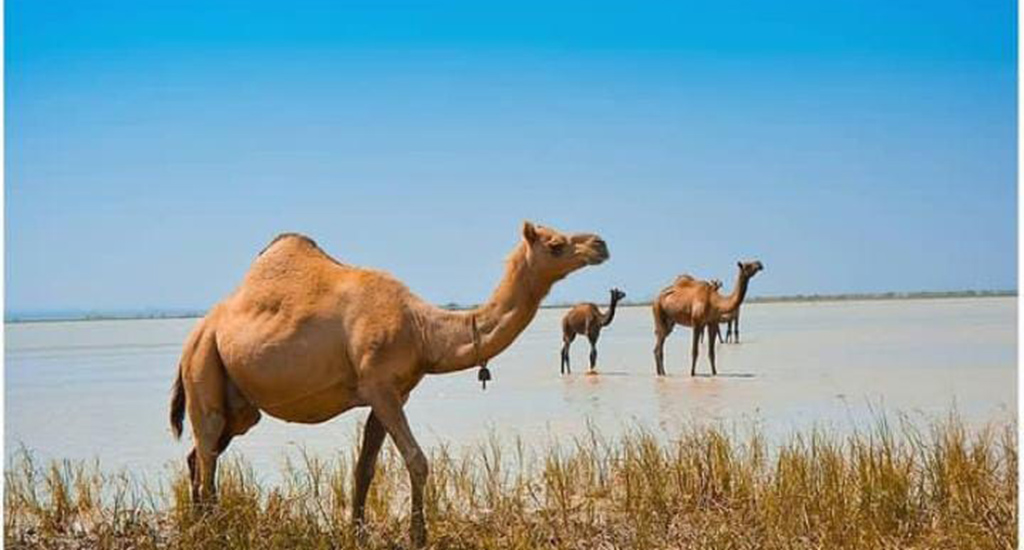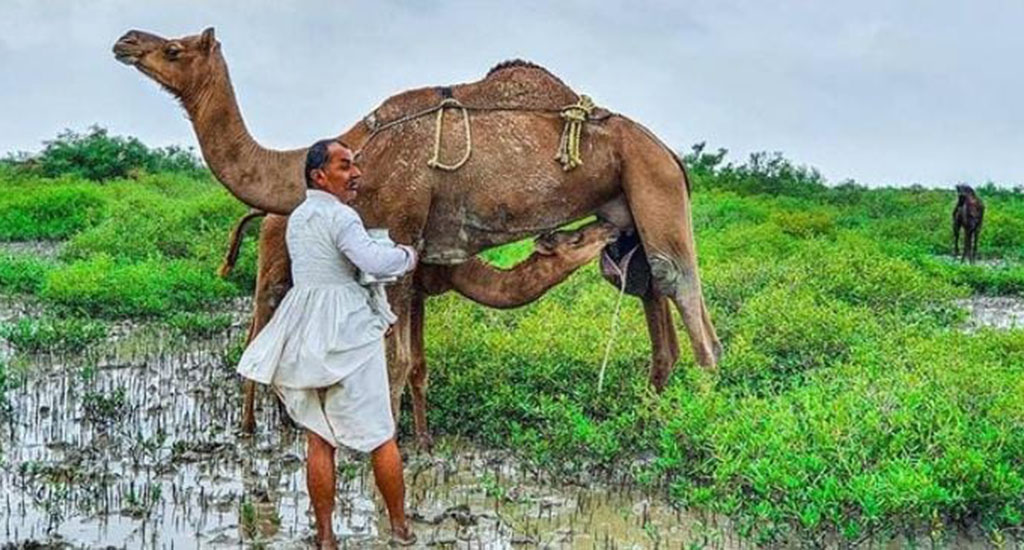
Amul’s camel milk a lifeline to depleting Kharai camel herders in Gujarat’s Kutch
Camel milk and camel chocolate give a lifeline to herders of the remarkable but threatened kharai camel, which can swim in the ocean and eat saline plants.

Camel milk and camel chocolate give a lifeline to herders of the remarkable but threatened kharai camel, which can swim in the ocean and eat saline plants.
In the coastal area of Gujarat camels are still being used for both agriculture and transportation.
Kutch, which makes up 25.29% of the state’s total area and is located in the westernmost region of India, borders Rajasthan and Pakistan. The area’s topography is distinctive in that it is cut off from the rest of the state and country by salt plains, a sizable area of salt marshes and a sea.
There are two different camel breeds in Kutch. One is the well-known kutchi breed, and the other is the indigenous kharai breed.
Due to its exceptional ability to survive on both dry land and in the sea, the kharai breed is considered an ecological breed. In fact, this type of camel gave rise to the word kharai, which in the local language means ‘salty.’
The kharai camels have adapted to the harsh desert climate near the sea, developing a unique ability to swim in the deep or shallow salty water. They can swim up to three kilometres and their softly padded hooves make it easy for them to move through the salty, wet coastal terrain.

It is no wonder they also go by the name dariyataru (meaning sea-swimmer).
But that is not all.
They don’t just swim through the Gulf of Kutch, an inlet of the Arabian Sea, to small forest islands during the rainy season. They also graze on mangroves and other saline-loving vegetation.
But thermal power, cement and shipyards, among other industries, as well as too much salt, are major threats to the dwindling mangroves in Kutch.
Also Read | Once a ‘burden’, double-humped camel is a prized animal in Ladakh today
The majority of these industries call for building seaside jetties that results in the destruction of mangroves that serve as food for the kharai camels.
The region’s increased salinity and the expansion of industrial activities have reduced the amount of available food and water for camels. Additionally, due to industrialisation, camels are no longer as widely used as a mode of transportation for people like the maldharis who used them for luggage transfers during migration. In rural area, items for sale were taken on camel backs earlier.
The camel population overall has decreased by 37.1% over the past Livestock Census, according to the 20th Livestock Census (2012). Life is very challenging in that regard. The kharai camel, which the National Bureau of Animal Genetic Resources (NBAGR) recognised as a distinct breed a few years ago, is likely the only domesticated breed of camel that coexists in two ecosystems.

Due to the non-availability of grazing lands and no other income from camels, people are decreasing their herd size. They sell their camels to people in Rajasthan and Madhya Pradesh at low prices, though there are ample opportunities to earn from camels like camel milk, wool and for rural sales.
Sanosara is a village of Bhuj tehsil, where the maximum number of camel herders stay, in the past 10 years, the number of camels has drastically decreased.
To sustain the kharai population, Amul Dairy has opened the door for the collection and marketing of camel milk through Sarhad Dairy Cooperative.
I earned 1.10 lakh a month thanks to the cooperative milk collection. Before that, milk had no value to me,
“Camels didn’t have much value before, but thanks to Anand Milk Union Limited (Amul), Sarhad Dairy Kutch, I get a remunerative price for camel milk in addition to selling three other times,” said camel breeder Hamir Bachu Jat.
At present 5,000 litres of camel milk are collected daily from four different collection centres in Kutch. From one of the camel milk collection centres is Nakhatrna, on an average 1,700 litres of milk are collected daily.
Also Read | Camel herders of Kachchh fall into decline as commons shrink
“I earned 1.10 lakh a month thanks to the cooperative milk collection. Before that, milk had no value to me,” said Surabhai, a herder.
Prior to the initiative, maldharis were selling their camels. But now they buy their camels from Rajasthan, Madhya Pradesh and other states.

In Sanosara, Janggi and many other villages the number of camels has increased because of the available milk market. Youth have now quit their jobs in other sectors and have joined the traditional business of camel herding.
There is a tonne of research on the benefits of camel milk for human health. Amul promotes the health and medicinal benefits of camel milk. It is advantageous for people with diabetes, blood pressure, TB and other conditions because camels only consume natural vegetation and artificial feeds are not used.
Amul camel milk and Amul camel chocolate are products made from camel milk.
With camel milk as a source of income, many families returned to herding and are raising the kharai breed.
Previously, the sale of camels was the only source of income, but today’s market for camel milk aids in the preservation of the endangered kharai breed.
The lead image shows the kahari camels that can swim in the sea (Photo by Inayathaider A Momin)
Inayathaider A Momin is a research fellow at the Verghese Kurien Centre of Excellence in the Institute of Rural Management, Anand.